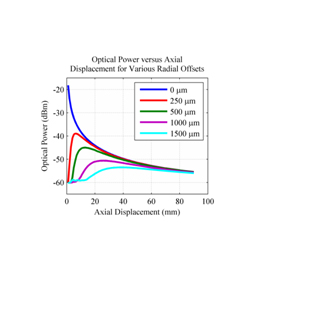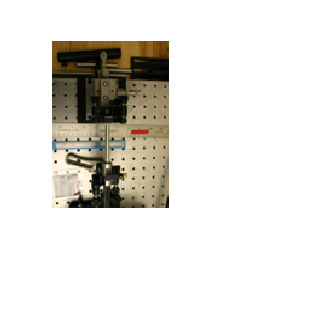Design of Optimal Bundled-fiber and Extrinsic Fabry-Perot
Inferometric Fiber Optic Sensors
Sponsors / Collaborators: Los Alamos National Laboratories
Optical fiber sensors offer potential advantages over traditional electro-mechanical sensors, such as being small, lightweight, and minimally invasive, being immune to electromagnetic interference, and not generating sparks. Further, some optical fiber sensor architectures offer substantial performance increases over their electro-mechanical counterparts, making them ideal for use in certain sensing applications. Since the late 1980’s, a variety of intensity-modulated optical displacement sensor architectures have been proposed and implemented as non-contacting sensing applications, with one of the most popular being the bundled displacement sensor (Figure 1 (left)). The performance of any such optical displacement sensor is governed by the quantity and the relative positioning of transmitting and receiving optical fibers within the bundled sensor probe. In other words, the radial offsets between transmitting and receiving fibers in the probe dictate the relationship between axial displacement and sensor output (Figure 1 (center)). In the case of a differential bundled sensor, multiple power measurements are taken from distinct groups of receiving fibers, and these multiple power measurements are combined in an effort to contribute sensor robustness to environmental fluctuations.
Our research has focused on validating a physics-based optical transmission model, modeling and analyzing the effects of uncertainty on measured optical power levels, and employing this model for accurate characterization of intensity-modulated bundled displacement sensor performance a priori; thereby guiding the arrangement of fibers within the bundled sensor to meet application-specific performance needs. We have implemented a genetic algorithm for efficiently exploring the design space of the proposed sensor’s bundling configuration, with knowledge of the spatial distribution of the transmitted signal power, in search of optimal architectures that offer high-sensitivity, with an allowable degree of nonlinearity, over a prescribed axial displacement range. We have shown that the output of the genetic algorithm is sensitive to the structure and properties of the cost function employed and that the algorithm converges to high-performance architectures. This design framework is may be generalized and has been used to design multiple bundled displacement sensor prototypes, whose experimental performance has been sufficiently close to simulation results.
Our research has also included an investigation of the performance limitations of a white-light external Fabry-Perόt interferometric (EFPI) displacement sensor. Generally speaking, interferometers may be used to relate target displacement to the phase-information buried within multiple interfering signals, which traverse unique path lengths. A white light EFPI uses either a swept source or a broadband source with a swept optical filter in order to measure power as a function of optical wavelength, and target displacement is demodulated from the power versus wavelength data. Our lab has a commercially available (“black box”) EFPI optical-interrogator module in addition to an EFPI assembled from off-the-shelf components. We are interested in characterizing the performance limitations of a white-light EFPI displacement sensor in terms of various user-controlled input parameters such as sampling rate, wavelength range, data points per sweep, phase-demodulation technique, etc. We are also interested in analyzing the effects of uncertainty on EFPI operation and proposing signal processing solutions for mitigating uncertainty and enhancing sensor performance.
Ultimately, it is our goal to provide a thorough side-by-side comparison of the ranges of performance-metrics that are available with the intensity-modulated and white-light EFPI sensing methodologies.



